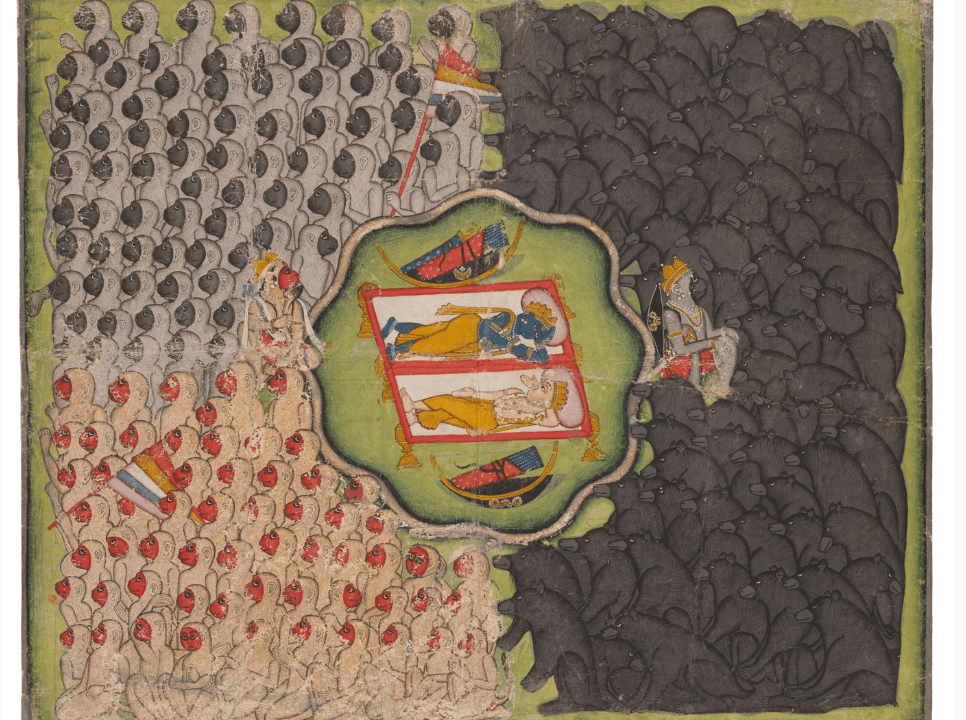Indian miniatures are a world of art, rich in detail, and cultural significance. These small-scale masterpieces, often patronized by rulers, courtiers, and affluent merchants, represent a unique artistic tradition that flourished across the Indian subcontinent for centuries.
Intricate and meticulously created by highly skilled artists trained from a young age, Indian miniatures have always been cherished as treasures, akin to precious gems and jewelry. This genre of painting encompasses a wide array of themes, from depictions of courtly events to mythological narratives, and cultural practices. These jewel-like paintings are typically found in illustrated manuscripts, albums, and individual folios. They are known for their vibrant colors, achieved using natural mineral pigments like lapis lazuli and malachite, and often illuminated with gold and silver.
What’s fascinating about Indian miniatures is their ability to capture the essence of the Indian subcontinent. The art form has evolved over time, reflecting distinct regional influences and nuances.
In the coming week in London, two remarkable collections of Indian miniatures will be up for auction. Sotheby’s is set to present parts three and four of the sale from the estate of Stuart Cary Welch on October 25. Stuart Cary Welch was a renowned collector of Indian art and an influential scholar in the field. Simultaneously, Christie’s will be showcasing the collection of Toby Falk on October 27. Toby Falk was another esteemed academic and expert in Indian art.
Both Welch and Falk were not just collectors but gifted scholars, and their contributions to the study of Indian and Islamic arts are highly regarded. Their collections represent a treasure trove of Indian miniature paintings.
The global art market is witnessing a resurgence of interest in Indian classical art, especially in miniature paintings. Recent auctions have driven this interest, with some pieces fetching impressive prices. For instance, a Mughal Akbarnama folio was sold at a Sotheby’s auction in London for almost nine times its lower estimate, reaching £266,700.
These upcoming auctions promise to be equally exciting. Sotheby’s, for example, previously set records with their auction of Welch’s Islamic and Indian art in 2011. A Mughal painting attributed to the artist Govardhan fetched a staggering £2,953,250.
If you’re considering investing in Indian art, exploring the world of Indian miniatures can be a rewarding strategy. Various schools of Indian art have distinct characteristics and styles, and today, these works are recognized and valued based on these features. Schools like Rajput, Mughal, Deccani, Central Indian, Company School, and lesser-known regional schools have all made unique contributions to this art form.
In the upcoming auctions, several star lots and hidden gems are waiting to be discovered. These include artworks by master miniaturists that exhibit a blend of European and Indian styles, as well as paintings that provide insights into the importance of elephants in Indian art. The diversity of themes and styles in Indian miniatures ensures there’s something to captivate every art enthusiast.
So, if you’re looking to explore the world of Indian miniatures, don’t miss these auctions, as they offer a window into a rich and vibrant artistic tradition that continues to be highly relevant on the global stage.


General Jean-François Allard with his Family in Lahore, attributed to Imam Baksh Lahori, India, Punjab, Lahore, dated 1838, estimate £100,000 – 150,000 | Courtesy: Sotheby’s London




MUGHAL INDIA, CIRCA 1615
Opaque pigments heightened with gold on paper, the margins blue and salmon-pink, laid down on paper reinforced with fabric mesh, with nasta’liq and devanagari inscription below, the verso plain with an inventory number
Painting 9 5⁄8 x 5in. (22 x 12.6cm.); folio 16 1⁄8 x 11 ¼in. (40.9 x 28.5cm.)

Credits – https://www.christies.com/
Credits – https://www.Sothebys.com/
An Eye Enchanted: Indian Paintings from the Collection of Toby Falk

